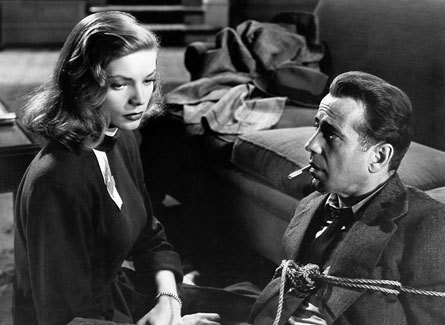#redflex
Arizona Legislative Memo: Traffic Camera Companies Need PI Licenses
Traffic camera companies operating in Arizona may be committing a crime by operating without a private investigator’s license, a newly released memorandum to the state legislature explained. The non-partisan Arizona Legislative Council, the legislature’s official source for drafting and reviewing legislation, looked at the licensing question on behalf of state Representative Sam Crump (R-Anthem).
Shareholder Revolt Takes Out Three Traffic Camera Company Leaders
Angry shareholders yesterday ousted the chairman of the board of a major traffic camera company and two of his closest allies. Redflex Chairman Chris Cooper and Directors Peter Lewinsky and Roger Sawley resigned to avoid an embarrassing vote after learning that a majority of shareholder proxies expressed no confidence in their continued leadership. The internal revolt followed closely upon the revolt of Ohio voters in the cities of Chillicothe and Heath.
Busted! Redflex's Redlight Camera Semi-Snuff Film
Redflex is the Australian company that runs many if not most of America’s red-light camera programs. Although I’m not a city resident, I attended two Redflex Q&A sessions in Canton, OH over the past two nights. About twenty people attended the first meeting. Around sixty showed up at the final of four meetings—once people caught wind of what was at stake. All of the meetings included city council members, city safety director Thomas Nesbitt and Hizzoner the Mayor, William Healy. Redflex’s Executive Vice President Aaron Rosenberg began the first meeting with the video above. The clip was shown without warning. Hello and boom: a graphic and violent accident of the type Redflex’s cameras are supposed to prevent. No emotional blackmail there, then.
Rosenberg claimed the accident happened in Dayton, OH (it’s also featured on the company’s website). According to Rosenberg, the Chrysler PT Cruiser blows through the red in the curb lane doing 33 in a 35. This after the light had been red for 28.4 seconds.
As I slowly overcame the high-school-drivers’-ed-style shock of seeing a quick clip of carnage, I became increasingly angry and appalled. Why is it OK for a company selling safety equipment to use such blatant shock tactics to rally taxpayers to their for-profit cause? With aspiring teen drivers, you can understand the value of “tough love.” But while good profits may come from scare tactics, good governance does not.
Whose meeting is this anyway? By allowing Redflex to start the evening in this cynical, manipulative manner, Canton was revealing the truth: the fix was in. And then I started to dissect the accident. . . .
We were shown the brief clip of footage. Nothing more. No information on the cross-street speed limit. The Subaru was going plenty fast, but who knows if he was speeding?
The hapless pedestrian was strolling along across the street AFTER the cross-street light had changed to green. Doesn’t at least a small part of the blame rest on his decision to cross that street against signage? Cities and towns put up those Walk/Don’t Walk signals for a reason.
Also, did the pedestrian have a reasonable amount of time to cross?
I remember an article about an elderly woman getting ticketed for blocking traffic in a crosswalk. A TV crew investigated and found that a group of high school students couldn’t make it across the intersection before the light turned green at a dead run.
Furthermore, what exactly did Redflex’s camera do to prevent this accident? Ipso facto, nothing. Supposedly, Redflex’s systems reduce this kind of T-bone crash rate. But there’s no independent data on this for one simple reason: it’s not true.
In fact, red-light cameras are notorious for causing rear end collisions. While a spectacular crash like the one shown is particularly horrific, a large[r] number of rear-end collisions would lead to a large[r] numbers of whiplash cases. It’s a chronic injury that can literally ruin lives.
Last but not least, even if no T-boning accident had occurred, it looks like the SUV could have struck and maybe even killed the pedestrian.
To know the truth about this “instructive” incident, I would like to see the actual accident report and hear an analysis from a safety expert whose salary doesn’t depend on a red-light camera contract.
As those of you familiar with my screen name (SexCpotatoes) might imagine, I gave the city’s suits and the Redflex EVP a hard time, asking plenty of pointed questions. When pressed about Houston and Denver’s increased accident rate after red-light camera installation, Rosenberg responded “That was not our company.”
I asked city traffic engineer Dan Moeglin why his department hadn’t implemented any other safety measures: number boards that count down to red, synchronizing more traffic lights through town, or extending the yellow times. “I have all the traffic info about yellow light timing and such right here, I can go over them with you if you want, but these numbers give even me a headache.”
He also said that “yellow light duration is set by a formula taking into account speed limit, and width of the roadway.”
I briefly touched on the lawsuit against Redflex regarding the radar equipment they’d imported and distributed in violation of federal law. “That was an issue with a sticker not being properly placed or affixed,” Rosenberg demurred.
So a company devoted to catching motorists who must follow the letter of the law down to the last tenth of a second justifies breaking the law, perjuring themselves and falsifying certification documents as a clerical error. Nice.
I’m starting a petition to get the red-light camera issue placed on the ballot for the next general election. I leave it up to you, TTAC’s Best and Brightest, to decide whether using this crash footage to sell camera systems to greedy cities is morally reprehensible. Meanwhile, if you want to know why Canton is even entertaining this idea, I suggest you ignore the video and, as always, follow the money.


















Recent Comments